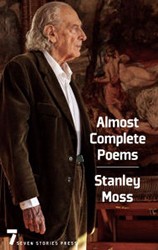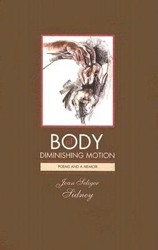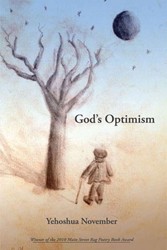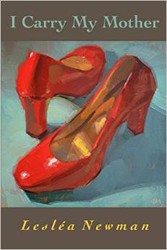Geoffrey Hartman’s poetry in The Eighth Day is on a majestic level, requiring a highly literate audience, steeped in mythology, literature, and Judaism. Hear the rhythmic hints of Biblical rhetoric:
First I mounted a balloon
Grappled for the sun,
Made of it a fiery string
Stretched across a bone.
One wonders what larger-than-life heroic character, other than Icarus, can fashion the sun into a “fiery string.” The poem titled “A Short History Of” suggests that the narrator is God, who in reviewing his work nostalgically at first, regrets it, at last. Hartman goes on to deal with stories from the Bible and other Jewish themes in a very personal vision. The problematic story of The Akedah is dealt with in “Abraham,” which tries to defend God’s strange command to Isaac that he murder his most loved son.
He who had pleaded for fifty,
Yes, for ten,
Rose early to destroy the only one,
To dry up the laughter of the Princess.
But, from a thicket of thorns,
the father of rams
provided a tangled voice,
an everlasting horn:
And saved the face of God.
This philosophical poem implies that God, “the father of rams,” sent one to stave off the murder, as he had seen that Abraham had passed the test of faithfulness to Him.
Hartman also makes many allusions in this book to both the Holocaust and Jewish holidays. The holiday of Passover is the subtext of “Day of Remembrance,” for example. The title of this poem is ironic, as it is not Yom Kippur here but the Passover Seder which is the holiday of freedom celebration that is used as a contrast to communicate the real need for remembrance. In this poem, Hartman refers to matzoh, the flat bread Jews must eat for eight days in place of bread as loaves of “flat corpses” in ovens. Although the rabbis “break words” with each other in an attempt to have a classic seder, while awaiting the angel Elijah to enter the open door and drink the cup of wine symbolically set out for him, the wine remains untouched as “through the door echoes fly and unreadable ash enters along with bloody streaks of sound.” This seder is one of mourning, not joy. And Hartman indicates that remembrance of those who suffered and perished in the Holocaust takes precedence over tradition.
Although some of the poems seem like prose, with long sentences, most of them have strong images which transcend the style, such as “Evening feathers the sea/like a cortege of gulls” (“Who Gives food to All Creatures”), or “The trees were jewels in the icy wind” (“Quest”) and “after a storm/the mildness of mingled skies/the bosoming dark passed oever, gone/and the hearth is the horizon, and the light/possesses the monitory trees” (“Instructions to a Movie Maker”).
The poems encompass a wide swath of Jewish history and reach references to the twenty-first century. The unusual breadth of knowledge underlying the poems deserves attention and appreciation.
Related Content:





